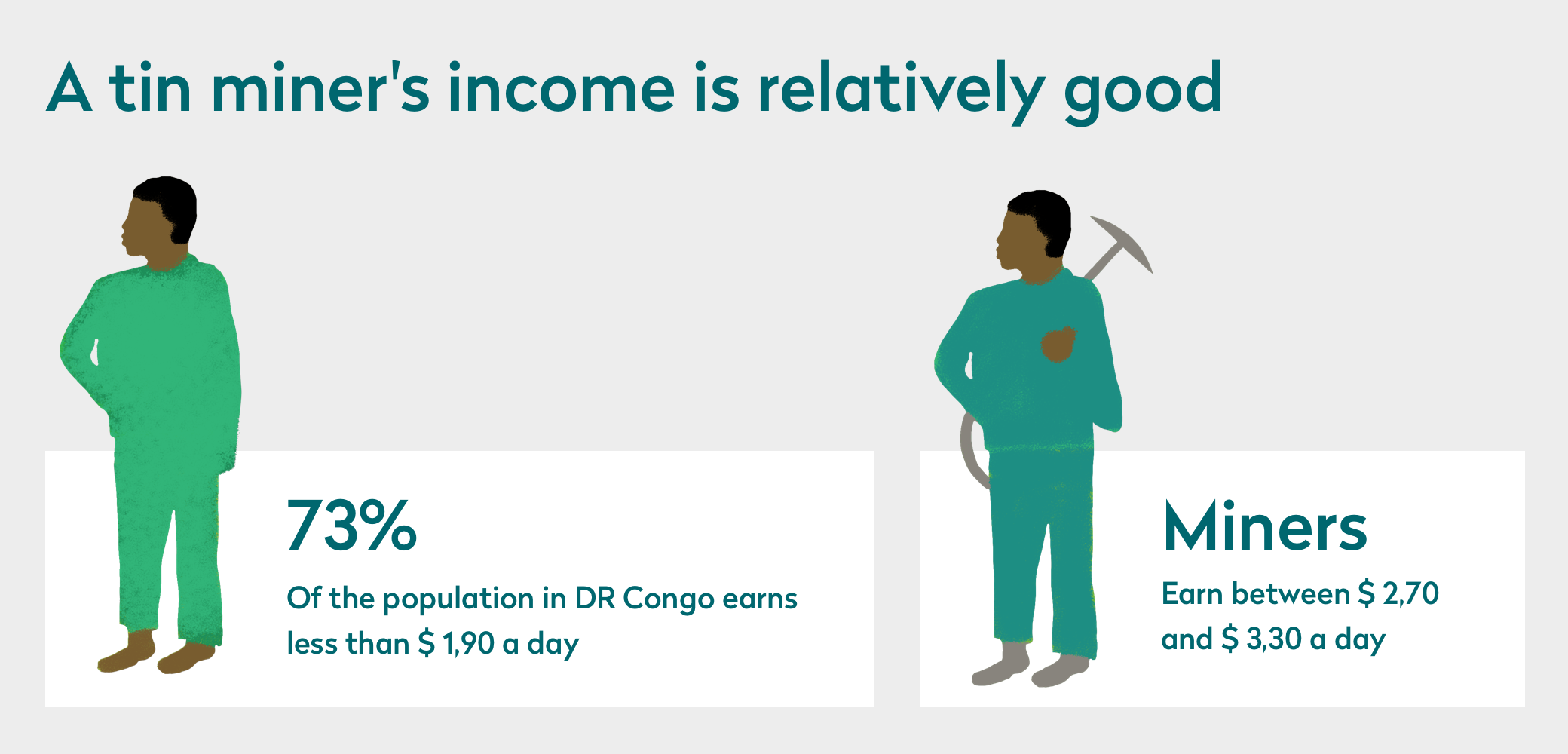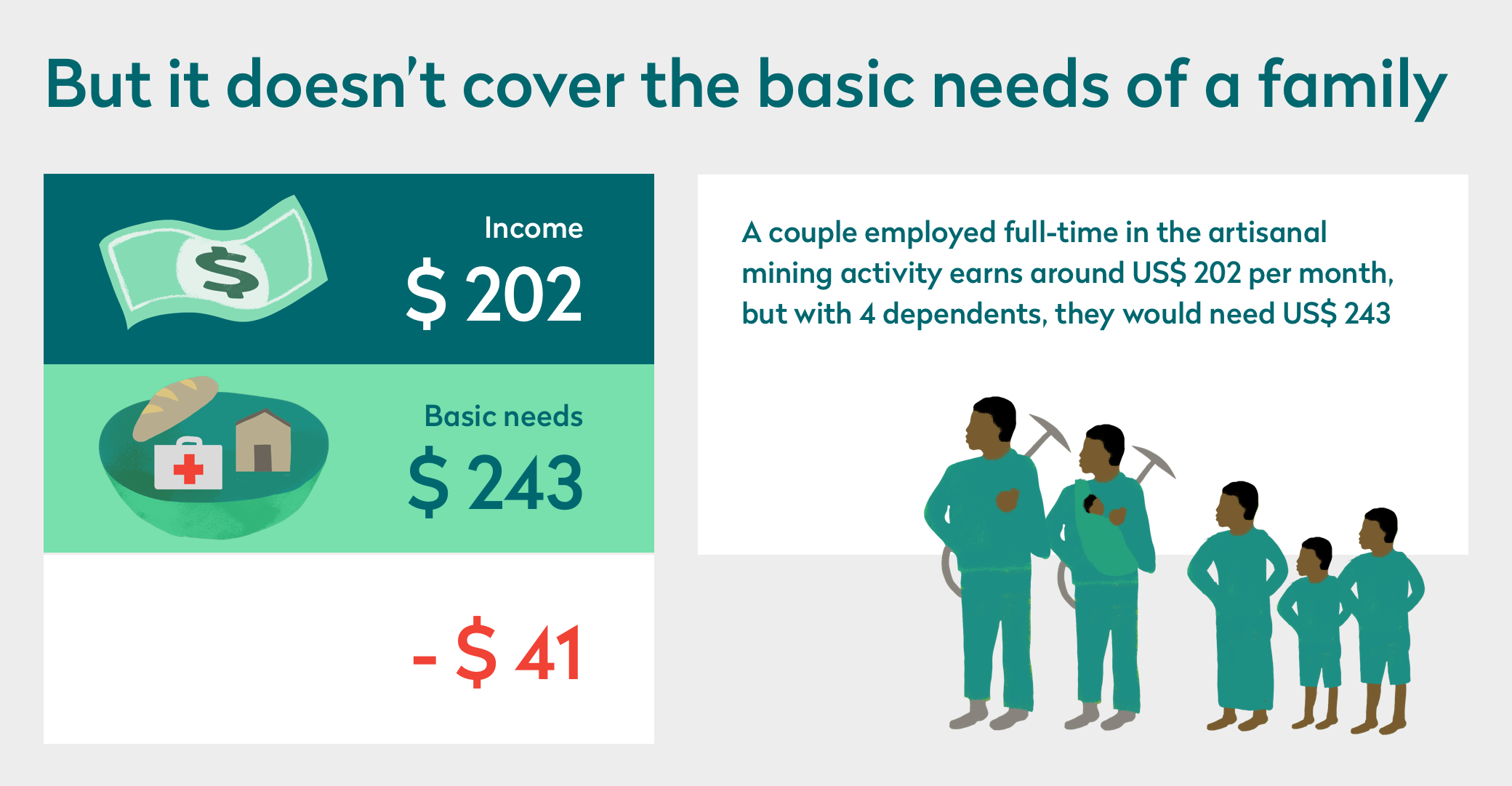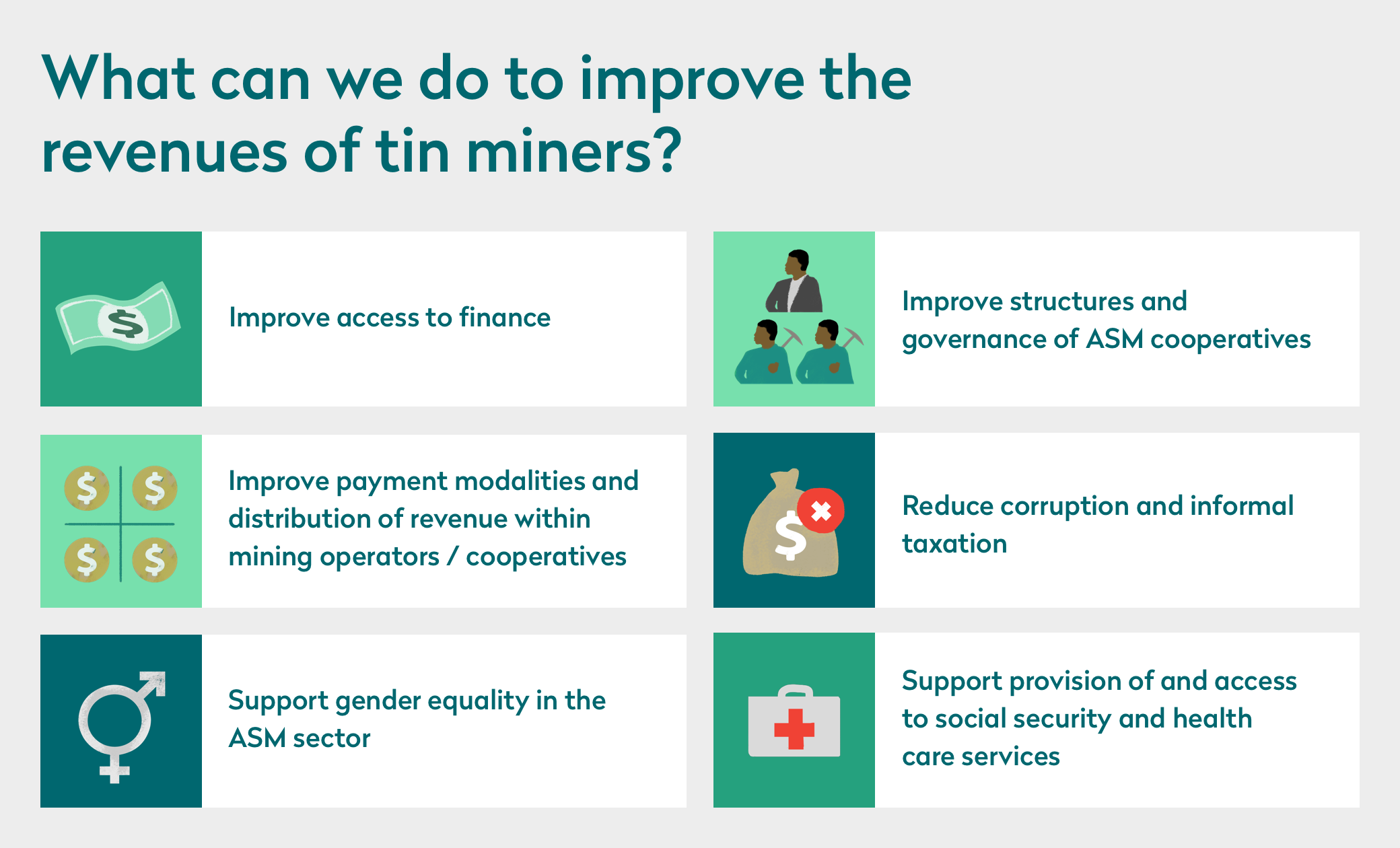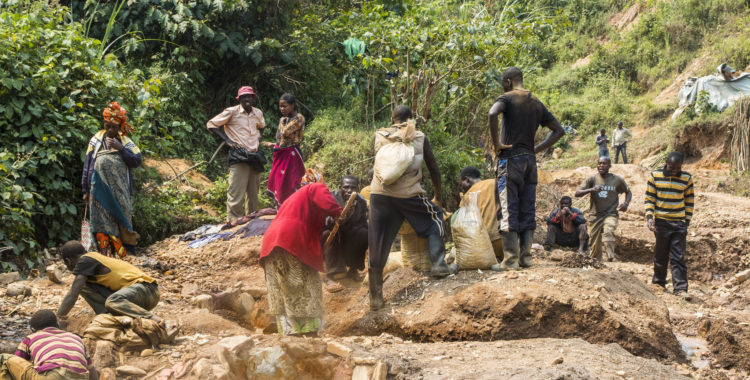Long before Fairphone made a single phone, it was working to better understand and improve mineral supply chains. Many years and three phones later, it's still focusing on its mission of driving important materials projects and pioneering research that has a positive impact on how materials are sourced, used and reused – improving both environmental factors and the lives of those working with these materials.
One of its focus materials for improvements is tin. As part of its goal to continually increase transparency and find areas where it can make the most impact, Fairphone commissioned two studies which examine this material at two opposite points of the supply chain: virgin tin mining in the Democratic Republic of the Congo (DRC), and the state of tin recycling in China. While this research is specific to a single material, the complexities and issues in the tin supply chain accurately reflect the challenges when it comes to fair materials as a whole.
Keep reading to learn more about the high-level findings from the miners revenue study, as well as more insight into the issues related to tin. And if you want to dive deeper, be sure to read the full report and listen to the recent Fairtalks podcasts where we hear more straight from the researchers themselves.
Why is Fairphone so interested in tin?
Tin is essential for electronics manufacturing. In phones, for example, it’s commonly used in solder paste – a kind of metal “glue” that’s used to attach tiny components to the PCB.
Despite the impression that it’s not quite as precious as some other metals, our current available reserves of tin might only last 20 or 30 more years. And with a variety of interesting applications like energy storage, the demand for this material just keeps growing. Besides balancing long-term supply and demand, the issues in the tin supply chain mirror those of many minerals, from poor wages and unsafe working conditions to lack of regulation and environmental destruction.
Fairphone's initial interest in tin stemmed from its classification as a conflict mineral. Following the implementation of the Dodd-Frank Act, most major electronics companies stopped sourcing tin from the DRC and surrounding countries, due to the concerns that it might be linked to funding warlords and illegal conflict. However, besides cutting off funding from criminal activities, when companies stopped buying tin from these regions, they also cut off the incomes of miners and their families.
To support the economies in these regions and stimulate the production of traceable, conflict-free tin, Fairphone began working with the Conflict-Free Tin Initiative (CFTI) to source tin and integrate into its supply chain. To this day, it is still using this tin.
While sourcing conflict-free tin is an important achievement, it only addresses a limited number of issues. For its fair material ambitions, Fairphone wants to examine and find ways to improve a much wider variety of social and environmental factors. By undertaking these recent research projects, it's able to understand the tin supply chain even better – looking at specific issues related to virgin mining, as well as the sources of waste (and potential for recycling and recovery) at every phase of this material’s use.
ASM miners don’t earn enough to cover basic expenses
For tin and other materials mined in the DRC, Fairphone is especially focused on artisanal and small-scale mining (ASM). Instead of avoiding the sector all together, which is still the norm in the electronics industry, it actively looks for ways to engage ASM in its supply chain. Supporting these (often informal or loosely regulated) operations offers the best opportunities for making lasting changes that have a direct impact on local communities.
Working with the International Peace Information Service (IPIS), an independent research institute and Levin Sources, a consultancy that works to build responsible mineral supply chains, Fairphone was involved in a research project that aims to provide a better understanding of why ASM communities remain extremely poor and identify the factors that impact their income.
One of the key findings of the report was that ASM tin miners in the DRC don’t earn enough to cover the needs of their families. For example, in eastern DRC, a couple employed full-time in the artisanal mining sector might earn a combined income of USD 202. However, with an average of four dependents, they would need USD 243 to cover their basic needs. Despite this, ASM is still one of the best sources of income in this region of the world, especially for people with limited education who don’t own land or other assets.


To improve miners’ incomes, the report recommends that those who purchase tin (such as electronics companies) should remain engaged with ASM supply chains and continue to source materials in line with due diligence guidelines. In addition, stakeholders throughout the supply chain should join forces and focus on finding paths to a formalized tin market.
This advice aligns with Fairphone’s approach of active collaboration with AMS mining communities, working with like-minded partners to positively influence incomes and local development.

Current situation makes issues even more pressing
This research is very valuable to Fairphone’s vision of improving the electronics industry, which includes collaborating with and holding other stakeholders to a higher standard. However, since these two reports have been finalized, the world as we know it has undergone a massive transformation. The entire economy has taken a huge hit. The different stages of the tin supply chain, and certainly the people working in it, have been directly affected. Factories in China have slowed production or temporarily closed their doors. And in places like the DRC, incomes are increasingly unstable, and due to travel and shipping restrictions, the price of basic goods keeps rising.
So while all of the figures calculated were in a pre-COVID-19 world, this situation does provide an important lesson: it serves to illustrate how interconnected our world is, and how necessary it is to consider every part of the supply chain when attempting to create lasting change.



